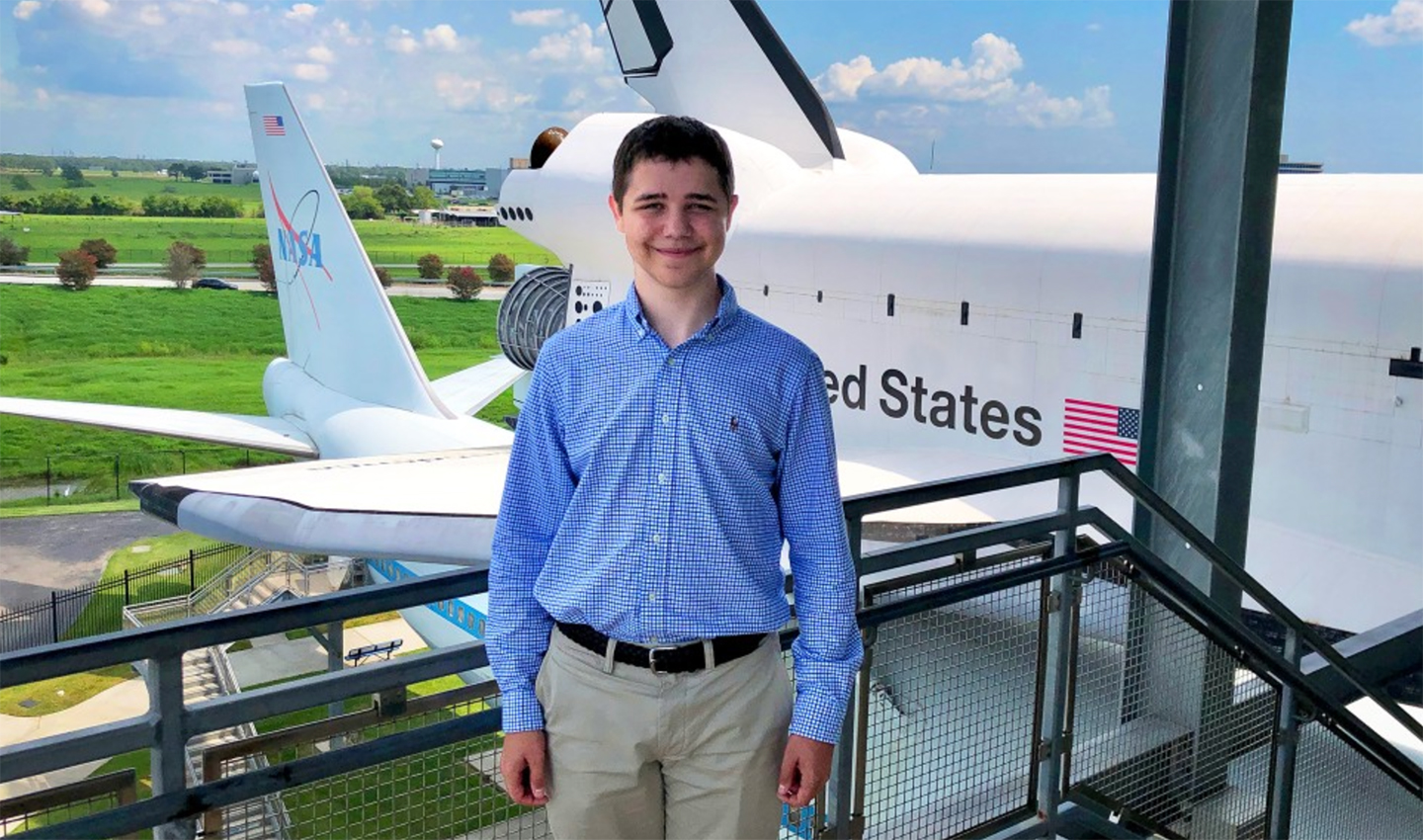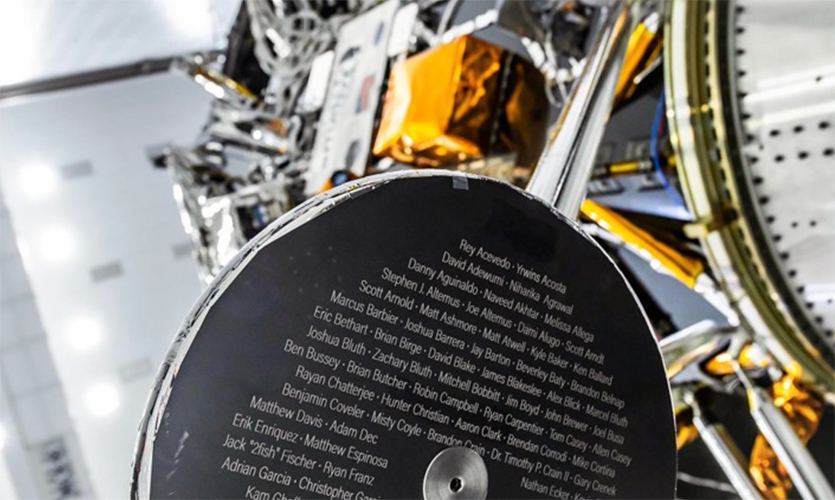Northwestern Student Makes History in Space
As an intern for Intuitive Machines, Benjamin Coveler contributed to the first US moon mission in 50 years

Growing up in Houston, Northwestern Engineering student Benjamin Coveler frequently visited NASA’s Space Center Houston and Johnson Space Center. He wandered the exhibit halls and marveled at the space shuttle Independence perched atop the converted Boeing 747 used to transport it. He walked the length of the massive Saturn V rocket, awe-struck by how it seemed to stretch forever.
Now, the McCormick School of Engineering fourth-year student has made his own contribution to the legacy of American space missions.
Coveler, a mechanical engineering major, spent his last two summers working at Intuitive Machines, the space exploration, infrastructure, and services company behind the United States’ first lunar landing in more than 50 years.
The company’s first lander, Odysseus, successfully made a soft landing on the south pole region of the moon on Feb. 22, making it the first commercially built spacecraft to make it to the moon.
As a software engineering intern for Intuitive Machines for two summers, Coveler worked with the flight software and guidance, navigation, and control divisions to prepare Odysseus for the mission.
Each day, he spent his morning programming, working on integrating onboard navigation sensors into the lander’s overall software. After lunch, he visited the vehicle assembly laboratory, which houses temperature- and dust-controlled rooms necessary for hands-on work with the delicate sensors. There, he could test the code he’d written.
That was also where he saw Odysseus for the first time.
“Nothing quite sets the atmosphere like putting on the full garb, feeling like [you’re] an actual clean room spacecraft maker,” Coveler said. “And then you walk in, and it's 14 feet tall. It looms over you. Then, you look a little bit closer, and you see all the little crimson ‘remove before flight’ tags and gold-plated propellant tanks. That's really when I knew this is what I want to be doing.”
When he arrived at Northwestern, Coveler planned to study fluid mechanics with an eye toward becoming an aerodynamicist at a Formula One team. After getting to directly apply his classroom learning to a space mission at Intuitive Machines, however, he’s considering a future in aerospace after he completes his bachelor’s degree this year and then his master’s degree at McCormick in 2025.
There were bumps in the mission: A navigation system malfunction and a lopsided landing meant the lander couldn’t do all it set out to do. Still, Coveler regards it as a major achievement to have successfully made a soft landing in a location that, according to Intuitive Machines, is the furthest south any vehicle has been able to land on the surface and establish communication with ground controllers.
With the mission, he's made his mark on space — literally. When Odysseus touched down, so did Coveler: His name is inscribed on the foot of one of the lander’s legs, alongside those of the rest of his team.

“I’m on the moon forever,” he said.
When he saw his name on the lander, he couldn’t help thinking back to his childhood visits to the Johnson Space Center.
“To work on a project that sits in that same lineage, I can't express the pride,” Coveler said. “And I was an intern, I had such a small part in it, but to have had any part, this is something I’ll be telling my grandchildren.”